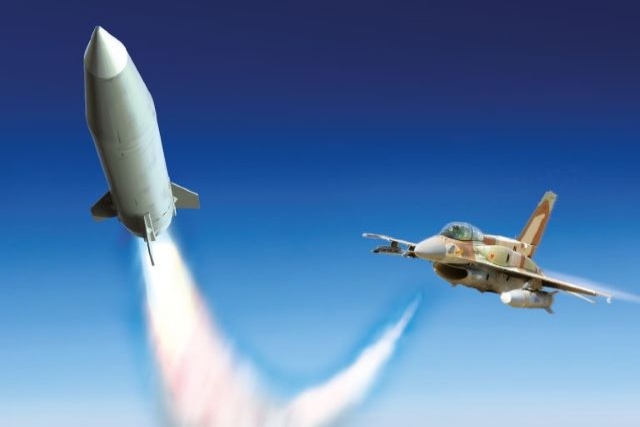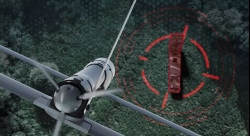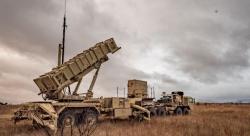Israeli 'Air Lora' Missiles Knocked out Radars of Iranian S-300PMU Air Defense Units
Israel deployed 'Air Lora' ballistic missiles to disable key Iranian air defense radars in precision strike on Oct 26, 2024

The 'Air Lora' precision ballistic missile of the Israeli Air Force (IAF) knocked down the radars of the Soviet-origin S-300PMU air defense systems during the attack on Iranian military sites on Saturday.
The 'Air Lora' is designed to strike from a near-vertical angle and maneuvers its way around enemy air defense systems, making it difficult to track and hit the missile. Radars of two S-300 PMU units were reportedly struck during the attack, according to Russian Weapons Telegram channel.
The 'Air Lora' missile, short for AIR LOng-Range Artillery, maneuvers in flight and descends nearly vertically at speeds reaching approximately 900 meters per second, making it difficult for air defense systems to intercept. The missile’s accuracy, boasting a circular error probable (CEP) of less than 10 meters, proved effective during strikes on workshops in the Parchin industrial complex, a facility known for its role in Iran's rocket development efforts. The attack’s success was confirmed by Planet Labs satellite imagery, which captured the impact sites.

Additional Israeli assets, including ROCKS aeroballistic missiles and likely Blue Sparrow missiles, were reportedly launched to maximize strike effectiveness over ranges extending up to 800 kilometers. The IAF’s use of 'Air Lora' missiles underscores Israel's commitment to neutralizing threats posed by Iran's advanced air defense systems, particularly the Soviet-origin S-300PMU units covering the Parchin site.
The success of this mission may be attributed to vulnerabilities within Iran’s air defense setup. The S-300PMU units appeared to lack optimal radar dispersion, allowing Israel to exploit radar "dead funnels" where systems could not adequately cover descending targets. Additionally, Iranian forces did not attempt to intercept Israeli aircraft, such as the F-16I and F-15I, despite their approach through Iraqi airspace before reaching launch range.
The precision strike highlighted a substantial technological disparity, as Israeli missiles demonstrated far higher accuracy compared to Iran's Shahab-3B and Fattah-1 missiles, estimated to be 15-20 times more accurate. This difference in capabilities may drive Iran’s efforts to enhance its military-industrial complex and improve navigation technology with assistance from foreign allies.













